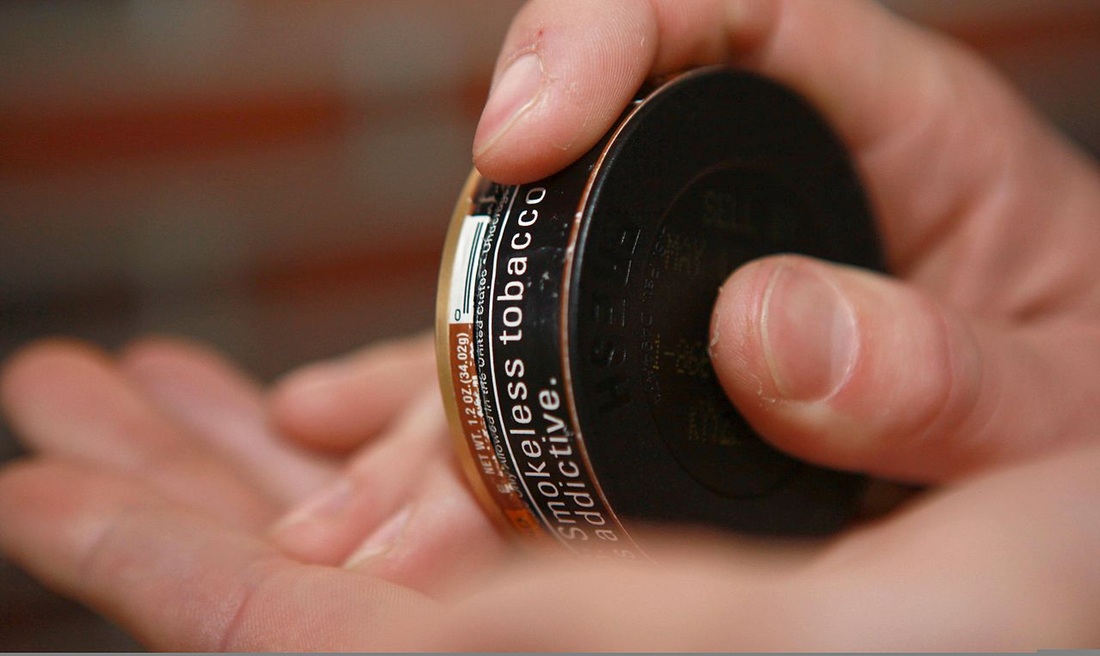|
Tobacco is well known for increasing a person's risk of developing cancer. And the same applies to smokeless tobacco. This type of tobacco comes in many forms, and although some people believe that it is safer to use than smokeable tobacco, it should be noted that no form of tobacco is healthy.
Some of the more common references that smokeless tobacco goes by include chew, spit, dip, and snuff. When people use this form of tobacco, they will commonly suck on it and then spit out any juices that form in their mouths. However, over the past several years, the popularity of "spitless" tobacco has increased, but it still has properties that increase a person's chances of developing cancer. From Asia to South and North America to Africa, smokeless tobacco is a substance that has been used by people all around the globe for thousands of years. The average amount of nicotine, which is the substance in smokeless tobacco that causes it to be addictive, is about 4.5 mg per pinch or dip of smokeless tobacco. Compared to a normal cigarette, this is over twice the amount. It would take 60 cigarettes to equal the amount of nicotine found in a can of dip. Statistics about Smokeless Tobacco More than 2.5 billion dollars each year in the United States (US) are spent by consumers on smokeless tobacco products. About 10 million people living in the US use smokeless tobacco. Approximately three percent of males and one percent of females use this type of tobacco. Although smokeless tobacco is not widely used by students in college, of those that do, about 16 percent are college athletes; this is probably largely due to the fact that most of them are prohibited from using other forms of tobacco. In regards to people who are under the age of 21, in the US, about 3 million use smokeless tobacco, with 75 percent of those people having used this type of tobacco before they reached 15 years of age. In the US alone, more than 7,500 people die each year as a result of using smokeless tobacco. 75% of these people died due to the development of any of the following forms of cancer:
There are 28 carcinogens in smokeless tobacco that are known to cause cancer. If a person uses smokeless tobacco, he or she increases his or her chances of developing cancer by 50 percent. Users have a 40 to 60 percent chance of developing Leukplakia, with a two to six percent chance that the Leukplakia will turn into cancer. When a person suffers from Leukplakia, there will be white patches, which tend to be thick, that cover the tongue as well as the person's cheeks. The most common cause of this condition is tobacco. Two Main Types of Smokeless Tobacco Chewing tobacco and snuff are the two primary forms of smokeless tobacco. Chewing tobacco tends to come in leaf form; however, sometimes it has the appearance of rope. When using this type of smokeless tobacco, it is placed between a user's cheek and his or her lower lip. Most times, people will place it toward the back of their mouths, but this isn't always true. A user can then decide for himself or herself whether to spit or swallow the juices that are created by sucking on the tobacco. Snuff is the opposite of chewing tobacco in that the leaves are finely cut. Sometimes, they are so finely cut that they come in powder form. This form of smokeless tobacco is available in a wide array of flavors and scents. People who use it have the option of buying it either moist or dry. They also have the choice of buying it in small tea bags, which are placed between the cheek and gums. Understanding the Harmful Chemicals in Smokeless Tobacco As stated before, there are 28 chemicals in smokeless tobacco that are known to cause cancer. Of these substances, the most dangerous tend to be nitrosamines. Nitrosamines are formed during the following stages of tobacco production:
Some forms of smokeless tobacco contain higher amounts of nitrosamines, and studies have indicated that higher amounts are a major contributor to the development of cancer. Two other primary chemicals found in smokeless tobacco that significantly influence a person's chances of developing cancer are polonium-210 and polynuclear aromatic hydrocarbons. Is Smokeless Tobacco Worse than Smokeable Tobacco? It should be noted that both forms of tobacco can lead to cancer. However, at the same time, it should be remembered that the nicotine found in smokeless tobacco stays in the bloodstream of users longer than that of those who smoke tobacco. Then again, the exact amount of nicotine is largely dependent on the amount of smokeless tobacco used as well as the product's pH. Using Smokeless Tobacco On a Safe Basis Never should a person be fooled into believing that there is a safe way to use smokeless tobacco. In fact, anyone who uses any type of tobacco product should be highly encouraged to quit. Millions of people who use tobacco have found great success in quitting. On the other side of the fence, if a person is adamant about using smokeless tobacco, the less he or she uses, the better. Smoking Bans Have Likely Increased the Use of Smokeless Tobacco In the US, the implementation of smoking bans has likely increased the use of smokeless tobacco. In fact, it is because of these bans that many tobacco companies have taken it upon themselves to increase their marketing efforts for smokeless tobacco. These companies are now advertising smokeless tobacco as an excellent alternative to tobacco products that get smoked—cigarettes and cigars. Many people who are used to smoking cigarettes or cigars in public places are now turning to smokeless tobacco because they can use these products in places where cigarettes are now banned. Studies are showing that the efforts of tobacco companies to promote smokeless tobacco are proving effective, and this is especially seen in young adults. And to top things off, many users of tobacco are now using both forms—smokeable and smokeless tobacco—doubling their risk of developing cancer and heart disease. The Effects of Smokeless Tobacco There are many harmful effects that tend to result from the use of smokeless tobacco, with the most common being the following:
Further Readings http://www.thequit.org/tools-resources/facts-statistics/chewing-tobacco-statistics/ http://www.cancer.org/cancer/cancercauses/tobaccocancer/smokeless-tobacco http://www.medpagetoday.com/Pulmonology/Smoking/15292
0 Comments
Leave a Reply. |

